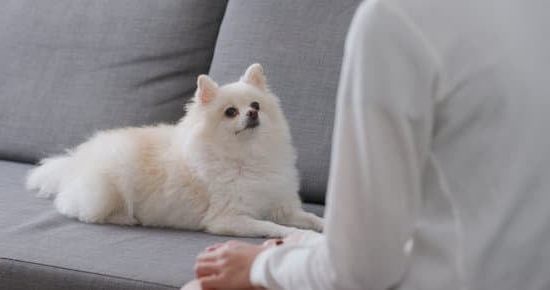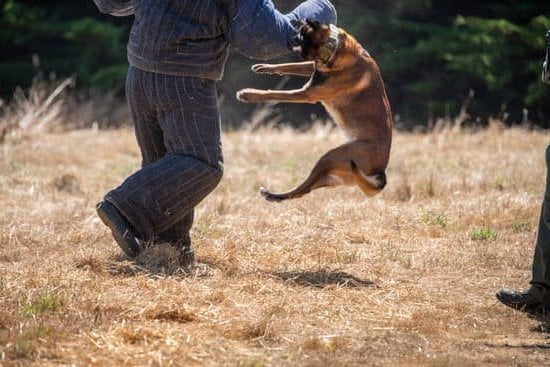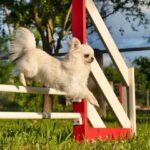Training a dog through the 2nd fear phase can be challenging, but with the right approach and techniques, it is possible to help your furry friend overcome their fears. The second fear phase in dogs is a natural part of their development, but it can manifest in various ways that may concern pet parents.
In this article, we will explore the signs and symptoms of the second fear phase and provide helpful tips on how to train your dog through this stage.
During the second fear phase, dogs may exhibit behaviors such as heightened anxiety, avoidance of certain situations or objects, and increased sensitivity to stimuli. Recognizing these signs is crucial in addressing your dog’s fears and providing them with the support they need during this critical period. Working with a professional trainer can be incredibly beneficial during this time, as they can provide guidance and expertise in helping your dog build confidence and resilience.
Positive reinforcement training is one of the most effective methods for training a dog through the second fear phase. By using positive methods such as rewards, praise, and treats, you can help boost your dog’s confidence and encourage positive behavior. Additionally, desensitization and counterconditioning techniques can be used to gradually expose your dog to their fears in a controlled and supportive manner, helping them overcome their anxieties over time.
Creating a safe and supportive environment for your dog is also essential in helping them feel calm and secure during this challenging phase. By understanding the second fear phase and implementing these strategies, you can support your dog through their fears and strengthen your bond with them in the process.
Signs and Symptoms of the Second Fear Phase in Dogs
The second fear phase in dogs is a natural stage of development that typically occurs between the ages of 6 to 14 months. During this period, puppies and young dogs may exhibit fearful behaviors that are not characteristic of their usual temperament. It is important for dog owners to recognize the signs and symptoms of the second fear phase in order to provide appropriate support and training for their pet.
Signs of the Second Fear Phase
During the second fear phase, dogs may display various signs of anxiety and fear. These can include increased vocalization, trembling, hiding, avoidance of certain situations or people, excessive panting, and dilated pupils. It is important for dog owners to be attentive to their pet’s behavior during this time and take note of any new or unusual actions that could indicate the onset of the second fear phase.
How to Recognize It
Recognizing the second fear phase in dogs involves being observant of changes in behavior, body language, and reactions to different stimuli. For example, a once confident and outgoing puppy may suddenly become timid and reluctant to approach new people or environments.
Additionally, a dog that was previously calm during car rides or thunderstorms may now exhibit signs of distress or anxious behavior. By paying attention to these cues, dog owners can identify when their dog is going through the second fear phase and take appropriate steps to address their pet’s needs.
Understanding how to train a dog through the 2nd fear phase requires patience, empathy, and a willingness to provide support and guidance during this challenging period in your pet’s development”.
Working With a Professional Trainer
Expert Knowledge and Understanding
Professional trainers have a deep understanding of canine behavior and psychology, allowing them to recognize the signs of the second fear phase in dogs. They can help you understand why your dog may be exhibiting certain behaviors and provide insight into how to address these issues effectively.
Customized Training Plans
One of the key benefits of working with a professional trainer is their ability to create customized training plans for your dog. Every dog is unique, and a professional trainer can assess your dog’s specific fears and anxieties to create a training program that is tailored to their individual needs. This personalized approach can be invaluable in helping your dog overcome their fears and build confidence.
Support and Guidance
Navigating the second fear phase can be overwhelming for dog owners, but a professional trainer can provide much-needed support and guidance throughout the process. They can offer advice on how to modify your dog’s environment, adjust their routine, and implement training techniques that are designed to help them overcome their fears. With the assistance of a professional trainer, you can feel more confident in supporting your dog through this challenging phase.
By working with a professional trainer during your dog’s second fear phase, you can gain valuable insights into how to train a dog through this difficult period. With expert knowledge, customized training plans, and ongoing support, a professional trainer can make a significant difference in helping your pet overcome their fears and develop greater confidence.
Positive Reinforcement Training
One key aspect of positive reinforcement training during the second fear phase is consistency. It’s important to consistently reward your dog for the behaviors you want to reinforce, whether it’s sitting calmly when exposed to a trigger or approaching a feared object without showing signs of distress. Over time, this consistent reinforcement will help your dog feel more secure and confident in various situations.
In addition to treats and praise, positive reinforcement training can also involve the use of toys or play as rewards for brave behavior. Engaging in interactive play with your dog can serve as an effective form of positive reinforcement, as it not only reinforces desired behaviors but also strengthens the bond between you and your pet. This can further contribute to building your dog’s confidence and helping them navigate through the second fear phase successfully.
| Positive Reinforcement Training | Benefits |
|---|---|
| Consistency | Boosts self-esteem |
| Interactive Play | Strengthens bond with the owner |
Desensitization and Counterconditioning
When implementing desensitization and counterconditioning, it is crucial to work at your dog’s pace and never force them into a situation that causes fear or stress. Start by identifying your dog’s triggers and creating a plan to expose them to these triggers in a gradual and systematic manner.
For example, if your dog is afraid of loud noises, you can start by playing recordings of these noises at a low volume while offering treats or engaging in playtime with your dog. As they become more comfortable, you can gradually increase the volume until they no longer exhibit signs of fear.
It’s important to remember that desensitization and counterconditioning require patience and consistency. Every dog is different, and some may progress more quickly than others. It’s essential to celebrate even small victories along the way and remain consistent in your approach. Additionally, seeking guidance from a professional trainer who specializes in behavior modification can provide invaluable support as you navigate this challenging phase with your canine companion.
| Desensitization and Counterconditioning | Overcoming Fearful Behaviors in Dogs |
|---|---|
| Gradually exposing the dog to fearful stimuli | Changing the dog’s association with fearful stimuli from negative to positive |
| Identifying triggers and creating a gradual exposure plan | Seeking professional guidance for behavior modification |
Creating a Safe and Supportive Environment
During the second fear phase in dogs, it is crucial to create a safe and supportive environment to help your dog feel calm and comfortable. Here are some tips for creating a space that will help your dog navigate through this phase:
- Provide a Comfortable Retreat: It is important to provide your dog with a designated, comfortable retreat where they can go when feeling anxious or fearful. This could be a cozy bed or crate in a quiet area of your home where they can feel safe and secure.
- Reduce Exposure to Stressful Stimuli: Limit exposure to stressful stimuli that may trigger fearful behaviors in your dog. This may include loud noises, unfamiliar surroundings, or interactions with unfamiliar people or animals. Gradually expose your dog to these stimuli in controlled environments as part of desensitization and counterconditioning techniques.
- Maintain Consistency: Dogs thrive in environments with routines and predictability. Keep their daily routines consistent and maintain a stable home environment to help alleviate stress and anxiety during the second fear phase.
- Offer Positive Reinforcement: Use positive reinforcement techniques such as treats, praise, and rewards to create positive associations with their environment. This will help build their confidence and resilience during this sensitive phase.
By creating a safe and supportive environment for your dog, you can help them navigate through the second fear phase with confidence and comfort. It is important to be patient, understanding, and consistent in implementing these tips as you work through this challenging time with your furry companion.
Building Trust and Bonding
During the second fear phase in dogs, it is crucial to focus on building trust and bonding with your furry friend. This phase can be a challenging time for both you and your dog, and creating a strong bond can help alleviate their fears and anxieties. Here are some tips for strengthening the relationship between you and your dog during this sensitive period:
1. Spend Quality Time Together: Allocate time each day to engage in activities that your dog enjoys, such as playing, going for walks, or simply cuddling on the couch. This will help reinforce positive associations with you and create a sense of security for your dog.
2. Use Positive Reinforcement: Rewarding your dog’s calm and confident behaviors with treats, praise, or toys can help reinforce trust between the two of you. Positive reinforcement training is an effective way to build confidence in fearful dogs and establish a strong bond based on mutual respect and understanding.
3. Practice Obedience Training: Regular training sessions not only help improve your dog’s behavior but also strengthen the communication between you and your pet. Teaching basic commands using positive reinforcement techniques can create a sense of structure and predictability for your dog, which in turn can help reduce anxiety during the second fear phase.
By focusing on building trust and bonding with your dog during the second fear phase, you can help them feel more secure and confident as they navigate this challenging stage of development. Remember to be patient, understanding, and consistent in your efforts to support your furry companion through this period of heightened sensitivity.
Overall, by employing these strategies combined with professional guidance from a trainer who understands how to train a dog through the 2nd fear phase,you can provide a safe, nurturing environment that promotes emotional well-being for your beloved pet.
Patience and Persistence
In conclusion, training a dog through the second fear phase can be a challenging but ultimately rewarding experience for both you and your canine companion. Understanding the nature of this phase and recognizing the signs and symptoms are crucial first steps in navigating it successfully. Seeking professional guidance from a certified dog trainer can provide invaluable support and expertise, helping you to develop a tailored training program that meets your dog’s specific needs.
Positive reinforcement training techniques, such as using treats and praise to reward desired behaviors, can be highly effective in building your dog’s confidence and reducing fearful reactions. Additionally, desensitization and counterconditioning methods can help your dog overcome specific fears by gradually exposing them to the source of their anxiety in a controlled and positive way.
Creating a safe and supportive environment for your dog, building trust and bonding through positive interactions, as well as practicing patience and persistence are all essential components of successfully training a dog through the second fear phase. Remember that every dog is unique, so it’s important to remain adaptable in your approach while staying consistent with the strategies that have been effective for your pet.
With time, dedication, and the right support, you can guide your dog through this phase with compassion and understanding.
Frequently Asked Questions
How Do I Train My Dog to Overcome Fear?
Training a dog to overcome fear requires patience, positive reinforcement, and gradual exposure to the source of fear. Using treats, praise, and calm reassurance can help build your dog’s confidence and reduce their fearful reactions.
Do Dogs Go Through a Fear Stage at 18 Months?
Yes, dogs can go through a fear stage around 18 months old. This is often referred to as the “adolescent fear period” where dogs may become more cautious or reactive to new things. It’s important to continue socializing and training them during this time.
Will My Dog Grow Out of Being Scared?
Whether or not a dog will grow out of being scared depends on the individual dog and the underlying cause of their fear. With proper training, socialization, and a supportive environment, many dogs can overcome their fears and become more confident over time.
However, some dogs may require ongoing management of their fears through behavior modification techniques or professional help from a veterinarian or certified dog behaviorist.

Welcome to the blog! I am a professional dog trainer and have been working with dogs for many years. In this blog, I will be discussing various topics related to dog training, including tips, tricks, and advice. I hope you find this information helpful and informative. Thanks for reading!





